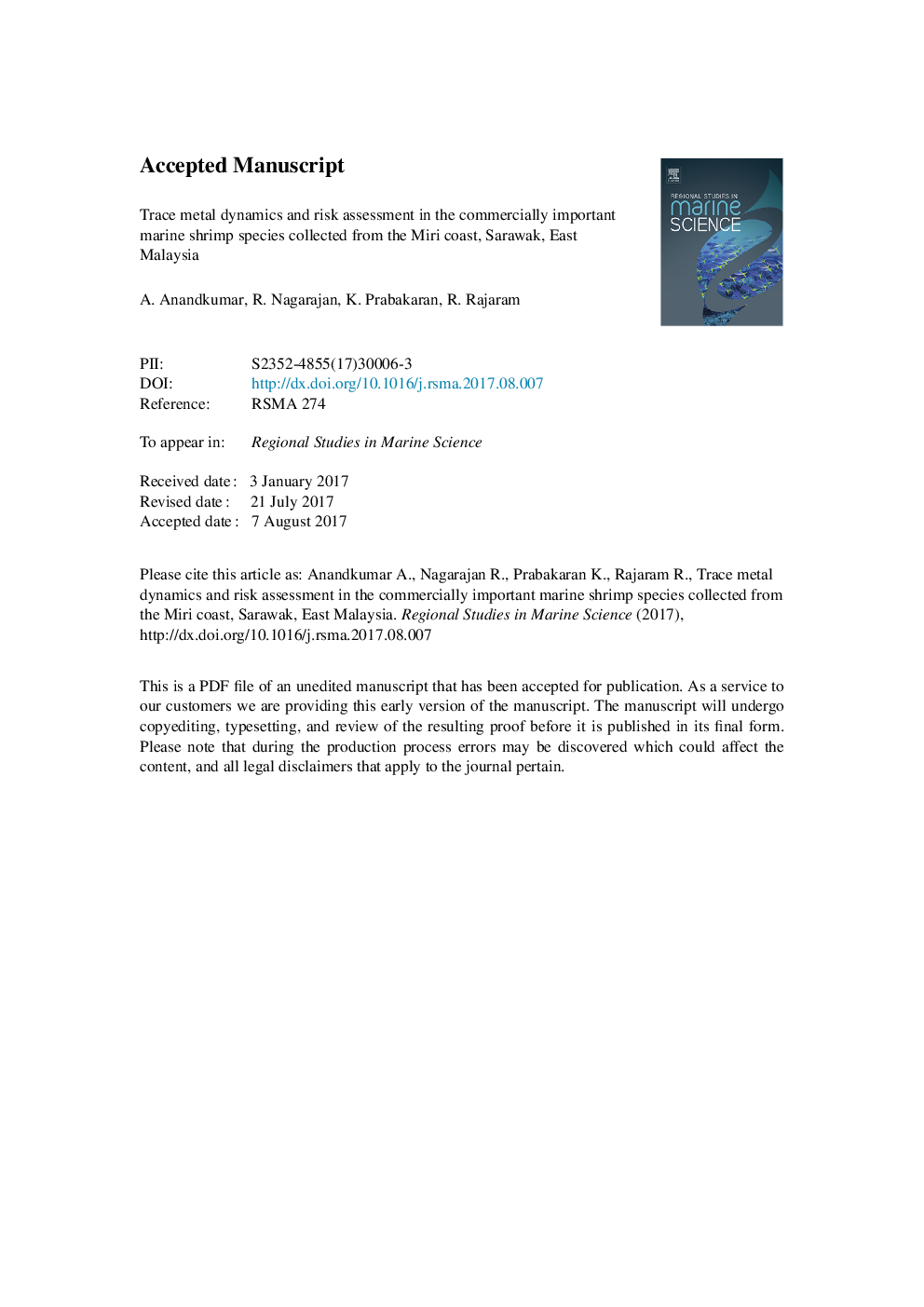| Article ID | Journal | Published Year | Pages | File Type |
|---|---|---|---|---|
| 5758046 | Regional Studies in Marine Science | 2017 | 37 Pages |
Abstract
The present study reports a preliminary survey of the presence of trace metal concentrations (Cu, Cd, Cr, Co, Ni, Pb, Mn, Zn and Rb) in the edible shrimp (Parapenaeopsis sculptilis, Litopenaeus vannamei, Penaeus merguiensis, Harpiosquilla harpax and Acetes indicus) tissues collected from the Miri coast, Sarawak. The bioaccumulation of trace metals in the muscle tissues were determined by Flame Atomic Absorption Spectrometer. The concentration of these trace metals ranged from 32.43 to 80.87 μg gâ1 for Cu, 0.12 to 2.10 μg gâ1 for Cd, 1.20 to 4.70 μg gâ1 for Co, 2.55 to 10.15 μg gâ1 for Cr, 7.30 to 51.35 μg gâ1 for Mn, 1.55 to 8.07 μg gâ1 for Ni, 1.64 to 7.25 μg gâ1 for Pb and 62.43 to 203.00 μg gâ1 for Zn. Among the analyzed metals, Zn concentration was higher and Cd was the least accumulated metal. This is due to the bioavailability and soluble trace metals in the studied coastal environment. Variations in the inter-elemental relationship of muscle tissues may be related to the body size (length and weight), a period of exposure and biological particularities of each species. The calculated estimated daily intake (EDI) and hazard indices indicate that the metal levels are lower than the permissible limits of Malaysian and International seafood's guidelines and results in no acute toxicities and safe for human consumption. Therefore, these species can be used as an efficient bioindicator of environmental quality and human health.
Related Topics
Physical Sciences and Engineering
Earth and Planetary Sciences
Oceanography
Authors
A. Anandkumar, R. Nagarajan, K. Prabakaran, R. Rajaram,
